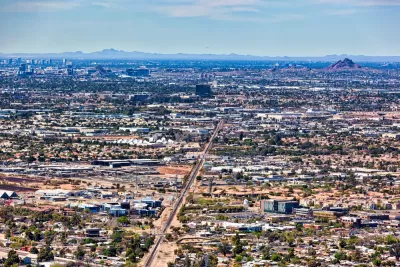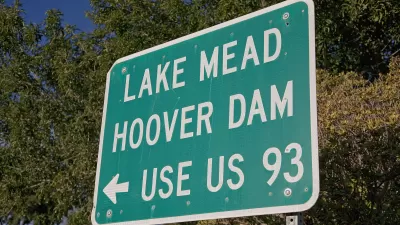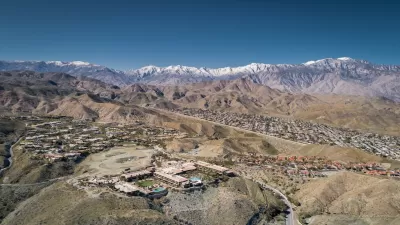Phoenix is growing, it's now America's fifth largest city, but its water supply is shrinking.

New suburbs are sprouting up all around Phoenix but new water supplies are not. "Twenty years ago, Anthem sprung out of virgin desert, a community 'masterplanned' from scratch with schools, shops, restaurants and spacious homes – many behind high walls and electronic gates – and its own country club and golf course," Joanna Walters reports for The Guardian.
The city is growing, it's now the country's fifth largest city, and that population needs water. Walters cites a Federal Bureau of Reclamation report from 2012 that says the city will experience droughts of five years or more every decade from now until 2050. But the region has been slow to act. "Greater Phoenix has not declared any water restrictions. Nor has the state government decided its official drought contingency proposal," Walters writes.
Building in the desert means bringing water from distant sources, "… Phoenix gets less than eight inches of rainfall each year; most of the water supply for central and southern Arizona is pumped from Lake Mead, fed by the Colorado river over 300 miles away," Walters reports. Bringing water uphill from that shrinking lake uses a lot of power, and though the city enjoys more than 300 days of sun a year, only between 2 to 5 percent of the state of Arizona's power comes from solar.
Meanwhile, growth continues. "Another firm wants to build a 'masterplanned community', like Anthem, south of Tucson, and modelled after the hilltop towns of Tuscany. It envisages five golf courses, a vineyard, parks, lakes and 28,000 homes," Walters reports.
FULL STORY: Plight of Phoenix: how long can the world’s 'least sustainable' city survive?

Planetizen Federal Action Tracker
A weekly monitor of how Trump’s orders and actions are impacting planners and planning in America.

Chicago’s Ghost Rails
Just beneath the surface of the modern city lie the remnants of its expansive early 20th-century streetcar system.

San Antonio and Austin are Fusing Into one Massive Megaregion
The region spanning the two central Texas cities is growing fast, posing challenges for local infrastructure and water supplies.

Since Zion's Shuttles Went Electric “The Smog is Gone”
Visitors to Zion National Park can enjoy the canyon via the nation’s first fully electric park shuttle system.

Trump Distributing DOT Safety Funds at 1/10 Rate of Biden
Funds for Safe Streets and other transportation safety and equity programs are being held up by administrative reviews and conflicts with the Trump administration’s priorities.

German Cities Subsidize Taxis for Women Amid Wave of Violence
Free or low-cost taxi rides can help women navigate cities more safely, but critics say the programs don't address the root causes of violence against women.
Urban Design for Planners 1: Software Tools
This six-course series explores essential urban design concepts using open source software and equips planners with the tools they need to participate fully in the urban design process.
Planning for Universal Design
Learn the tools for implementing Universal Design in planning regulations.
planning NEXT
Appalachian Highlands Housing Partners
Mpact (founded as Rail~Volution)
City of Camden Redevelopment Agency
City of Astoria
City of Portland
City of Laramie





























